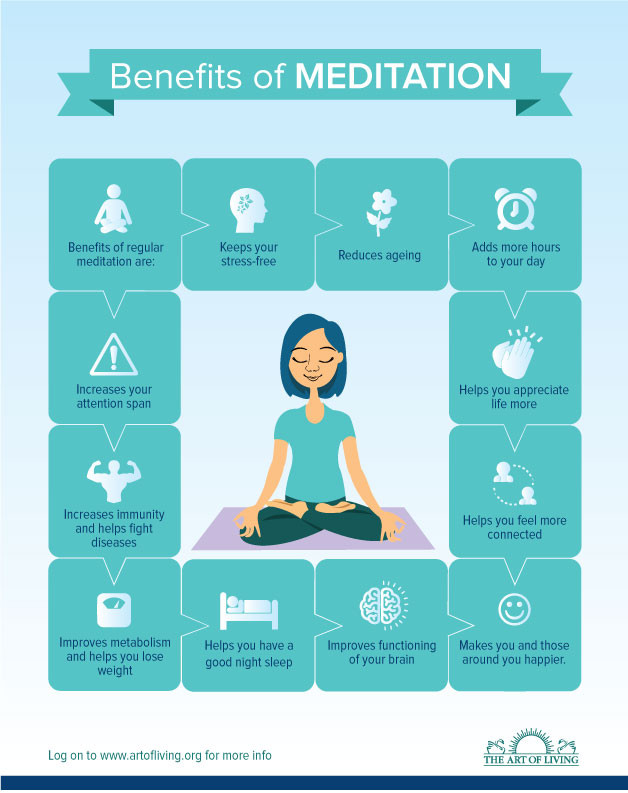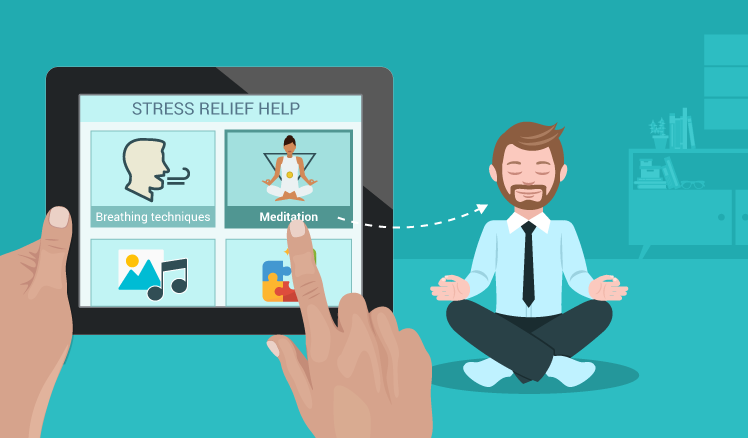
Guided meditation is a great way to increase your meditative practice. Using a professional instructor to lead you through a session can be a great way to learn how to meditate. These sessions can provide a great resource for improving mental health. A guided meditation session can improve your outlook and allow you to live the life you want. You can feel more relaxed and have a better appreciation for your life.
Guided meditation can teach you how to meditate. Many programs aim to relax and release tension in certain muscle groups. You may be instructed by your guides to concentrate on grounding and the healing light. It doesn't matter how you meditate, it's important to take things slowly until you can complete a session. Once you know the basics of guided meditation, you will be in a better place mentally.

What time should you start a guided meditation? Most people find that the best times to meditate are first thing in the morning and last thing at night. This is a great time to meditate, since kids are still sleeping, dinner is finished, and work has yet to be done. Guided meditation is a great way to start the day off fresh and get you into the right mood for sleep. Also, you can relax by starting the day with guided meditation at night.
While you may not be able to do it alone, guided meditation can help you reach a deep meditative state and achieve your desired goal. It'll be easier to relax your entire body when you use guided meditation. This will allow your brain to reach a deep meditation state. Your mind becomes relaxed throughout the guided meditation. This allows you to focus on breathing, visualization, relaxing, and relaxation.
Guided meditation allows you to go beyond logical thinking and allow your thoughts to flow naturally. Listening to a skilled teacher will help you achieve a deeper level of meditation and more peaceful thoughts. The guided meditations will help you learn how to meditate on your own, and will give you a clearer sense of direction. It's worth trying meditation once or twice to see if it works for you.

A guided meditation helps you to relax your mind. The guide will take you through a meditation session, where you'll be taught various meditation techniques. You should always follow the instructions provided by your guide when you listen to the audio. Once you are comfortable with the guided meditation, you'll be able to enjoy your session even more. If you are having difficulty focusing, listen to the audio files.
FAQ
These are 5 ways you can live a healthy and happy life.
Living a healthy lifestyle involves eating right and exercising regularly. Healthy eating means avoiding sugary and processed foods. Exercise helps burn calories and strengthens muscles. Getting enough sleep improves memory and concentration. Stress management helps reduce anxiety and depression. Fun keeps us happy and healthy.
How often should you exercise?
It is important to exercise for a healthy lifestyle. There is no set time limit for exercising. Find something you like and stay with it.
When you exercise three times per week, aim for 20-30 minutes moderate intensity. Moderate intensity means you'll still be breathing hard after you've finished. This type of workout burns around 300 calories.
If you prefer to walk, go for 10 minute walks four days a week. Walking is low impact and easy on your joints.
Jogging for 15 minutes three days a week is a good option if you prefer to run. Running is a great way of burning calories and building muscle tone.
If you're not used to exercising, start slowly. You can start with only 5 minutes per week of cardio. Gradually increase the duration until you reach your goal.
How do I count calories?
You might be asking "What is the best diet?" or "is counting calories necessary?" This depends on your health and lifestyle.
The Best Diet for Me - Which One is Right For You?
The best diet depends on me, my health, my goals, my preferences and my overall lifestyle. There are many diets out there, some good and some bad. Some work well for certain people while others don't. What can I do to make the right choice? How can I make the best decision?
These are the questions this article will answer. The article starts by introducing the many types of diets currently available. Then, the pros and cons of each type of diet are discussed. Finally, we'll look into how to choose the best one for you.
Let's start by taking a look at the various types of diets.
Diet Types
There are three main types. Low fat, high proteins, and ketogenic. Let's take a look at them all below.
Low Fat Diets
A low-fat diet is one that limits the intake of fats. This is achieved through reducing intakes of saturated fats (butter and cream cheese, for example). You can replace them with unsaturated oils (olive oil and avocados) For those looking to lose weight quickly, a low-fat diet is often recommended. This diet can cause constipation, heartburn, and stomach problems. A person may also experience vitamin deficiencies if they don't get enough vitamins.
High Protein Diets
High protein diets discourage carbohydrates and encourage the use of proteins. These diets often have higher levels of protein than most other diets. They are meant to help build muscle mass and burn more calories. They may not be able to provide sufficient nutrition for people who need it. Also, they tend to be very restrictive, so they aren't suitable for everyone.
Ketogenic Diets
The keto diet is also known as the keto diet. They are high-fat and low in carbs and protein. They are typically used by athletes and bodybuilders because they allow them to train harder and longer without getting tired. To avoid side effects such as fatigue, nausea, headaches, or other unpleasant side effects, you must strictly adhere to their instructions.
What are the ten best foods to eat in America?
These are the 10 best foods you can eat:
-
Avocados
-
Berries
-
Broccoli
-
Cauliflower
-
Eggs
-
Fish
-
Grains
-
Nuts
-
Oats
-
Salmon
How can you tell what is good?
You need to listen to your body. Your body will tell you how much exercise, nutrition, and sleep you need. To avoid overdoing it, it's important that you pay attention to what your body is telling you. Be aware of your body and do what you can to maintain good health.
Statistics
- WHO recommends consuming less than 5% of total energy intake for additional health benefits. (who.int)
- In both adults and children, the intake of free sugars should be reduced to less than 10% of total energy intake. (who.int)
- According to the Physical Activity Guidelines for Americans, we should strive for at least 150 minutes of moderate intensity activity each week (54Trusted Source Smoking, harmful use of drugs, and alcohol abuse can all seriously negatively affect your health. (healthline.com)
- This article received 11 testimonials and 86% of readers who voted found it helpful, earning it our reader-approved status. (wikihow.com)
External Links
How To
What does "vitamin" actually mean?
Vitamins are organic compounds naturally found in food. Vitamins allow us to absorb nutrients from food. Vitamins are not made by the body, so they must be obtained through food.
There are two types vitamins: water soluble or fat soluble. Water-soluble vitamins dissolve readily in water. You can find vitamin C,B1 or thiamine, B2 or riboflavin and B3 or niacin, B3/niacin, B6/pyridoxine, folic Acid, biotin and pantothenic Acid as examples. The liver and fatty tissues are home to fat-soluble vitamins. Some examples include vitamin D and E, K, A and beta carotene.
Vitamins are classified according their biological activity. There are eight major groups of vitamins:
-
A - Vital for normal growth and maintaining good health.
-
C - important for proper nerve function and energy production.
-
D - Vital for healthy bones and teeth
-
E is needed for good reproduction and vision.
-
K - essential for healthy muscles, nerves, and bones.
-
P - Essential for strong bones and teeth.
-
Q – aids digestion of iron and iron absorption
-
R – Required for the formation of red blood vessels.
The recommended daily allowance of vitamins (RDA), varies according to age, gender, physical condition, and other factors. The U.S. Food and Drug Administration, (FDA), sets the RDA value.
For adults over 19 years, the RDA is 400 mg per day for vitamin A. For fetal development, pregnant women need 600 mg per day. Children ages 1-8 require 900 micrograms per day. Babies under one-year old require 700 mg per day. Between 9 and 12 years of age, however, this drops to 500 mg per day.
Children between the ages 1--18 years old who are overweight or obese require 800 micrograms per Day, while those who are overweight or obese need 1000 micrograms. To meet their nutritional needs, children underweight and obese require 1200 micrograms a day.
Children ages 4-8 years who have been diagnosed with anemia need 2200 micrograms per day of vitamin C.
Adults over 50 years of age need 2000 micrograms per day for general health. Due to their increased nutrient needs, pregnant and breastfeeding women need 3000 micrograms daily.
1500 micrograms are required daily by adults over 70 because they lose approximately 10% of their muscle each decade.
Women who are pregnant and lactating need more nutrients than the RDA. Pregnant woman need 4000 micrograms daily in pregnancy, and 2500 per day after childbirth. Breastfeeding mothers need 5000 mg per day when breastmilk is being produced.